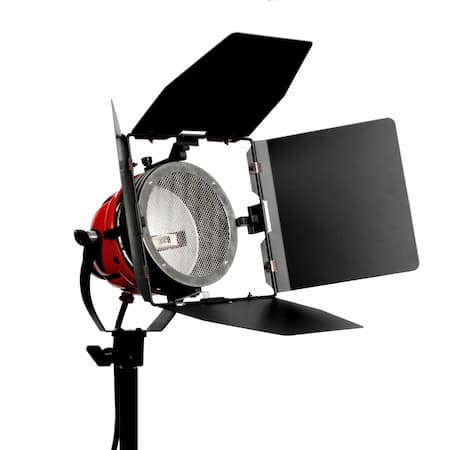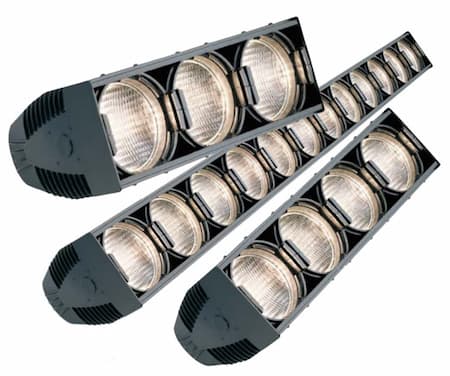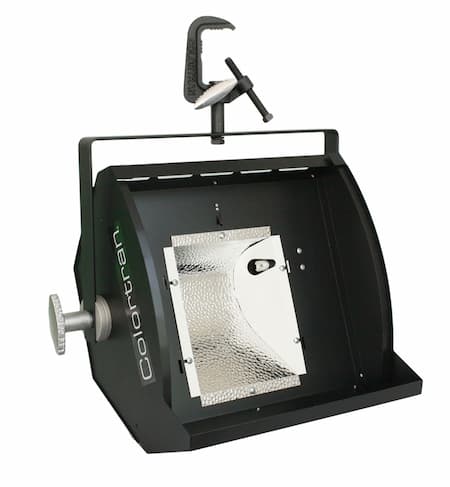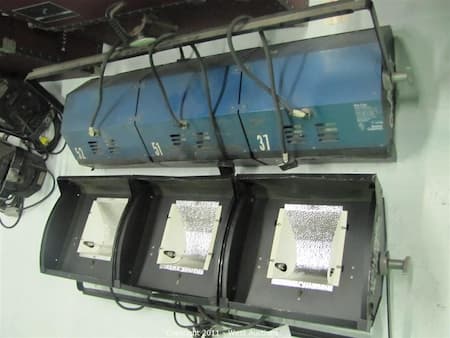Floodlights, sometimes called “open face units” have no lens, and fall into a few general categories. Because they are non-focusable, they are usually used for work lights, lighting drops, or broad areas of illumination.
Broad area light
Striplights
Far Cyc (cyc is short for cyclorama)
Broad area lights include Ellipsoidal Reflector Floodlights (ERFs) sometimes called “scoops” or more generic flood lights. Scoops can be useful for lighting the curved part of curved cycs – and any of these types can be good choices for work lights.
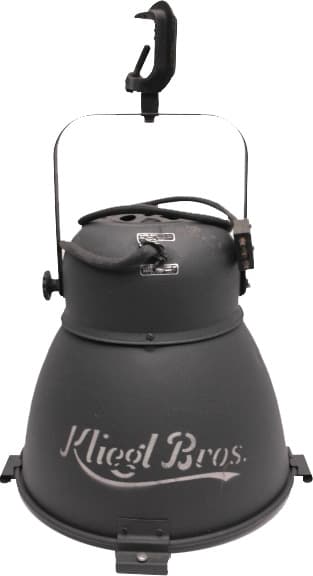
Scoop
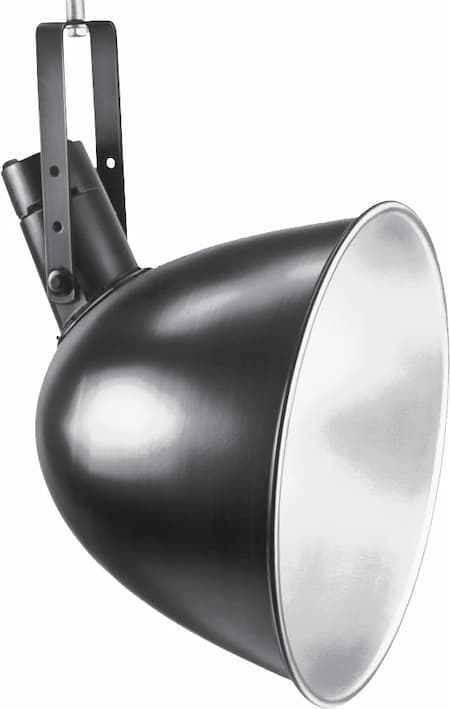
Scoop
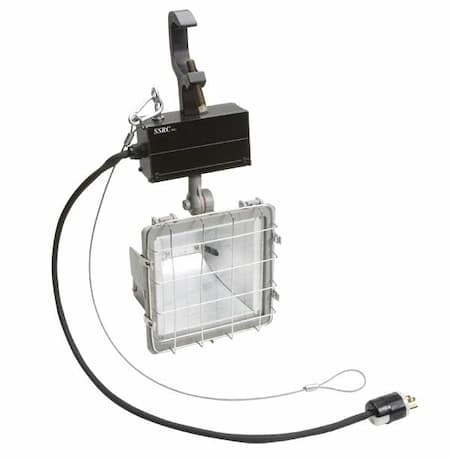
Generic Worklight
“Open face” and ellipsoidal reflector floodlights are often used in video production as well. Here is an example of one with barndoors.
Striplights get their name from the fact that they’re typically a row of lamps mounted in a channel with interconnected wiring with up to four separate circuits. Specified by the type of lamps they use, striplights may use standard reflector lamps, T3 double-ended tubular (T-type) lamps, or even PAR lamps (often PAR 38 or PAR 16 size; smaller than PAR 64).
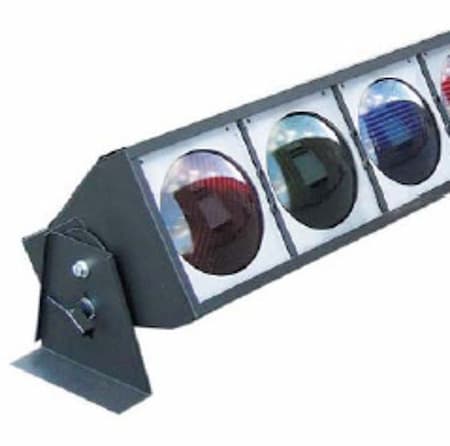
Above: striplights with “rondels” (glass color frames that won't burn out).
Sometimes called “border lights” or “wall washers”, striplights were traditionally used to light drops and large pieces of scenery. Because they don’t typically throw light very far, striplights are often hung above drops and placed on the floor (sometimes also mounted to the side) to help disperse the light over large areas.
Striplights (and far cycs covered next) are often wired so that they may be easily connected to additional units (this type of layout is called “daisy chaining”) to make an efficiently controlled line of light/color. Typically wired in sets of 3 or 4-cells, they are often colored with the primaries (or RGB plus amber) so that many colors can be additively mixed.
Above: 3 striplights; each of which is 6-cell (wired in sets of 3) which are then circuited together (daisy chained) so that each color can be controlled together. They are gelled with the primary colors.
LED striplights are becoming more popular. Their small physical size, long life, and low power consumption make them an excellent wall (or drop) wash replacement.

An LED striplight
The biggest challenge with lighting large painted drops and cycloramas is that most instruments would light the edge closest adequately but then fade out by the center of the drop. Putting units on the floor (as well as above) helped, but that placement also meant taking up valuable floor space, often needing a scenic element (called a “ground row”) to hide the units (a row of hedges or a fence are popular choices), and it would often mean having a bright area of light near the top of the drop – which could draw the audience’s eyes/attention away from the performers.
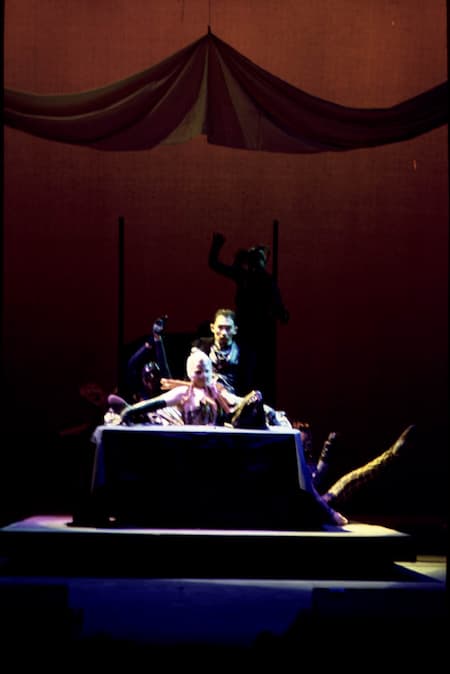
"The Mystery of Edwin Drood" production photo
Notice how the light on the drop (from above) is barely making its way to the bottom of the drop.
A cyc flood, like the T-3 striplight with an asymmetrical reflector can accomplish good vertical light dispersion. These lights, often called “Far-Cycs”, a brand name for lights manufactured by Colortran, are typically available in 1-4 piece configurations. For especially tall drops, units with 2 rows are available so that one set can be focused high and one low – getting an even better distribution spread.
|
Far cycs tend to throw about a 5'-6' "column" of light; so you'd need approximately one unit for every 6' width of cyc or drop you're trying to light. Example: A 30' wide drop would need 6 lights per color (or 6 LED color-tunable cyc units) for a smooth wash. |
LED Cyc-Lights are very popular. Their small physical size, long life, and low power consumption make them an excellent wall (or drop) wash replacement. Advanced units, like this one from ETC, have color-changing abilities builtin as well.
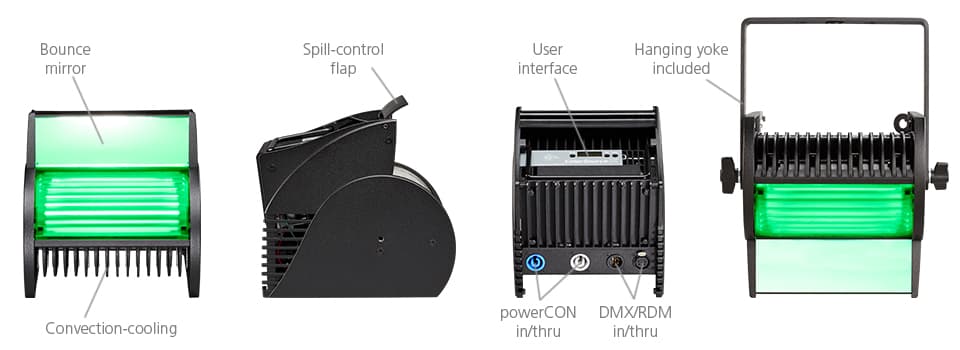
ColorSource CYC by ETC
Approximate cost: $1900/each as of December, 2023

